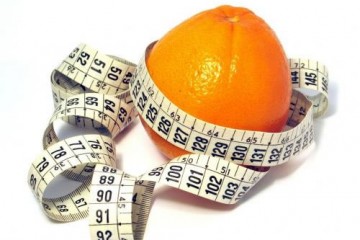Weight loss – How to calculate my ideal weight?

As a weight loss advisor in a fitness gym, it has been our policy that every new member will be assessed by me. Because of that, I have met a lot of people with different weight who have been struggling with weight loss for a long time. Some people are aware of their current weight status; some are in denial, while others just don’t care.
Many people have a different perception of what is the ideal weight. Some say it is a hundred pounds while others say it’s one hundred fifty. These numbers may be correct, but do you know that the ideal weight is determined together with the height?
During physical assessment of new members, one of the basic things I discuss with them is their Body Mass Index or BMI. Through BMI, I am able to determine if the client is underweight, normal, overweight, obese, or extremely obese. This way, together with their fitness instructor, we are able to formulate an effective weight management program specifically designed for that particular client.
Body Mass Index or BMI is a widely used tool by health professionals to categorize an individual to a certain weight group. This method is defined as the ratio of body weight and height. It is usually correlated with the percentage of fat deposits in the body, however people with increased muscle mass or those with larger body frame can also have an increased BMI.
There are three ways to measure a person’s BMI, the first equation is by dividing the weight in kilograms by the square of the height in meters. This is the simplest and universally used formula:
BMI = ( Weight in Kilograms / ( Height in Meters x Height in Meters ) )
Another way to get the person’s BMI is by dividing the person’s weight in pounds times 4.88 by the square of height in feet. The last option is by dividing the weight in pounds times 703 by the square of height in inches.
BMI = ( Weight in Pounds / ( Height in inches x Height in inches ) ) x 703
BMI = ( Weight in LB / ( Height in ft x Height in ft ) ) x 4.88
You may use any of the equations above, depending on which equation you are comfortable with. However, the first equation which is utilizing the SI unit of measure is highly recommended because it is what health professionals use.
After computing the BMI, the next step is to interpret the results. Look at your BMI and try to see where you BMI fit in to the following categories:
Category BMI Range Severely Underweight less than 16.5 Underweight 16.5 to 18.4 Normal weight 18.5 to 24.9 Overweight 25 to 29.9 Obese Class I 30 to 34.9 Obese Class II 35 to 39.9 Obese Class III 40 above- People with a BMI between18.5 – 24.9 are considered to have an ‘ideal weight’.
- And just little above that, i.e. BMI of 25 – 29.9, are categorized as Overweight.
- In the 2007 survey of the US Department of Health and Human Services, It has been recorded that 63% of the total population of America are overweight.
- People are facing weight issues in a different scale. However, the most alarming concern is the growing population of people who are overweight and obese. This problem has not only affected the adults but it has also affected the children as well.
For a healthy weight loss it is very important for everyone to know how to calculate the ideal body weight because it can give you an indication if you need to eat more, eat less, or just continue eating the same amount of food. By doing so, you will be saving yourself the trouble of seeking medical interventions to help you add or lose weight.
-
Hair Loss: A Guide To Preventing It
You probably did not give much thought to your hair until the day
-
Weight loss tip #117 – Carry a small water bottle to work
-
Take These Tips To Lose Weight Today
TIP! Try to become a coffee drinker if you want to lose some
-
Quick Weight Loss Tips For Beginners
These quick weight loss tips are for beginners, those of you that hav
-
Weight Loss Tip #85 — Practise surya namaskar to lose up to 2kg in a month
-
corn syrup vs. cane sugar
- DON'T MISS
- How This Food Blogger Lost 170 Pounds By Eating Clean
- Know The Best Way For Natural Weight Loss
- How to Lose Weight Without Exercising
- The Very Best Diet Program Is Likely To Make Weight Loss A Cinch
- Negative Calorie Foods And Weight Loss
- American Obesity levels rising
- Visualization And Weight Loss - See The Pounds Drop Away!
- Exercising Fast Weight Loss?
- Common Sense Healthy Weight Loss Plan - Free Weight Loss Plan
- Weight Loss Tips




